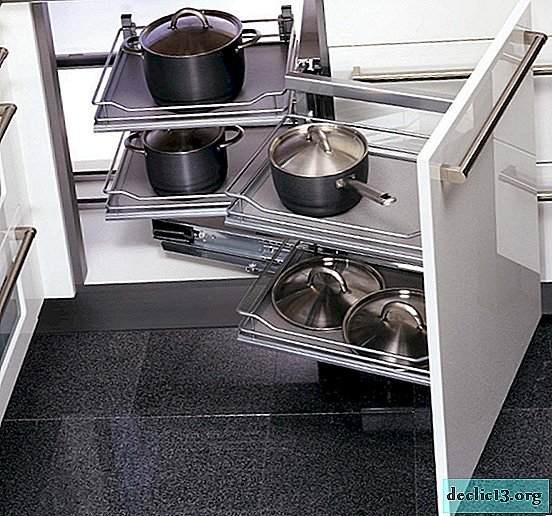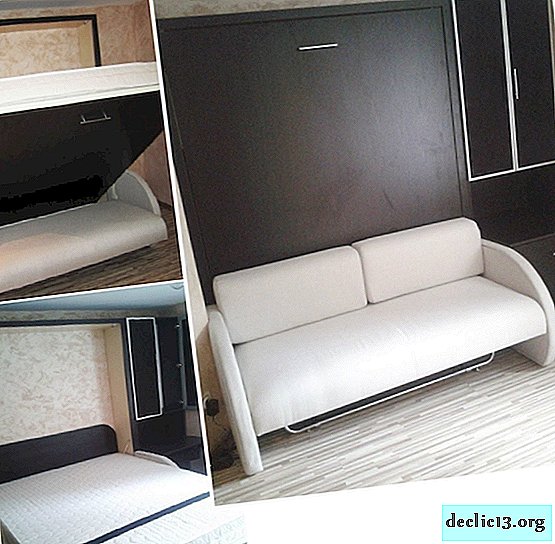Car DVRs: how to choose, tech. characteristics, classification

Drivers are increasingly convinced that a car dvr has become a necessity. All kinds of situations and cases on the road force car owners to resort to the help of a system that produces video recordings around the vehicle and in the passenger compartment. Therefore, the question of how to choose a DVR for a car is relevant.
As part of the article, I will consider this issue in detail and step-by-step instructions with which you can easily choose a car DVR. The material will give useful tips and advice regarding the operation of the automotive system.
- The DVR is an objective witness to the incident. Helps to prove the case in terms of compliance with the rules and helps out when a car is hacked or if the inspector illegally acts.
- Which model of the DVR to give preference depends on the conditions of use. If you plan to install a video recording system on a courier, truck or work car, buy an inexpensive device. It will cope with the task, which is reduced to shooting the general situation and routes.
- If you intend to equip a personal car with the device, opt for a device with a higher resolution. As practice shows, in life even the smallest detail plays an important role.
- If finances allow, get a system that fixes the situation on all sides of the car. Such models are equipped with a built-in GPS module, so the system captures the coordinates and ties to the terrain.
- Registrars are sold that help you determine the speed of the car using the recorded video. Such a function is only useful in case of an accident on the road. If they stop for exceeding the speed limit, the information of the registrar of inspectors will not work and they will believe their certified device.
- Do not disregard DVRs with a display. They can be viewed on the scene of an accident or incident. Devices that simultaneously perform a number of functions are popular, including playback of a recording, backup, demonstration of pictures from cameras and video recording. If you plan to buy a good car, such a system does not hurt.
- When choosing a DVR, pay attention to the information compression format. H.264, MPEG4 and MJPEG formats are used.
- MJPEG. Information compressed using the format takes up a lot of space on the drive. The format is a pioneer in the field of video recording. Such a model is worth a bit, but the quality of the video is much better.
- MPEG4 is an advanced compression option for information that takes up less storage space. The devices are equipped with an innovative elemental base.
- H.264 is a perfect format characterized by high definition images and improved color reproduction. Data recorded in the presented format takes up half as much space as in the previous version.
It is imperative to purchase a DVR if you plan to buy a car on credit. It is possible that the system will not come in handy, but if necessary, it will help out.
Classification of Car DVRs
The topic of further discussion will be the classification of car DVRs. At first, it is recommended to select a class, and only after that, a device.
The best is the class of DVRs represented by the most comfortable models. For urban conditions, the best solution is an expensive option. In small cities and towns characterized by friendly drivers, where many know each other, a less efficient system will work.
I will consider all classes to clarify the picture.
- Budget models. The class is represented by cheap and simple systems, with a microphone, a camera and record information on an SD card. Devices are connected through the cigarette lighter, and installation takes several seconds. The main disadvantage is the minimum possible number of microphones and cameras, which is not enough to completely fix the road. At the same time, due to their low cost, devices are very popular.
- Black boxes. They fix the picture and indicate the characteristics of the car, which facilitates the procedure for reproducing the accident, the behavior of the car and the reaction of the driver. As a result, finding out the culprit is easy. Multifunctional systems additionally fix the coordinates of the car, show acceleration, record video in the cabin and on the street. Mounted on the windshield. If the kit includes additional cameras, they are installed in other parts of the cabin. There are many pluses, one drawback is the high price.
- Camcorders. Video recorders of a universal nature. Such a system, mounted on glass, performs the functions of a registrar. If you remove it, it becomes a camera. Such versatility does not provide a good picture. The camera has an autonomous power source, which is bad for the dimensions and weight of the product. This leads to vibrations. In addition, the registrar's viewing angle should be within 130 degrees, and the camera 60 degrees. If you take the average value, in both cases it will turn out badly.
- Professional DVRs. The devices capture the full picture, as they are equipped with four cameras and several microphones. Support work with access points to the network, which allows you to transfer information to a desktop computer or netbook. The system writes to a memory card or hard drive. The DVR controls the car’s instruments, which helps you easily find out acceleration, speed and other characteristics. The main advantage of the device is the image quality at any time of the day.
Next, I will talk about the characteristics and operational features of the equipment.
DVR Specifications
Consider the technical characteristics of the DVRs. If you can navigate the issue, this will facilitate the selection process and increase the chances of acquiring a high-quality device.
- Resolution. The value determines the number of elements of the raster image. The clarity of the image depends on the parameter. The store will offer different options, but choose a model with a resolution of 1920 by 1080. Such a device will appreciate the image quality, which will protect against troubles.
- Viewing angle. An important parameter that defines the site of the terrain that falls into the frame. Remember, a large viewing angle contributes to the appearance of the effect, which is called the fisheye, and a small viewing angle does not allow you to cover the necessary fragment of the road. The middle option is 90 degrees.
- Frame frequency. In all DVRs, the indicator is 22 frames per second. Due to the high frequency, it is possible to parse the incident record into frames. Some devices support CCTV, which captures video at 5 frames per second.
- Scan. The index “i” in the characteristics of the device indicates the operation using interlaced scanning, and the index “p” indicates a progressive scan. I advise you to buy the second option, which has a high-quality picture in slow motion.
- Bit rate. Image quality also depends on this indicator. The higher, the better the video will be obtained. For modern devices, it is 8 Mbps.
- Sensitivity. Helps to get high-quality videos in poor lighting conditions. People who take professional photographs know this. Please note that devices are often equipped with a high resolution but low sensitivity CMOS sensor.
As for the functional features of the equipment, they are represented by automatic on and off, autonomous functioning, date and time superimposition, an integrated display and accelerometer. Advanced models are equipped with infrared illumination, a radar detector and a GPS receiver that records speed and fixes the route of movement.
Rules for operating DVRs
The final part of the article is devoted to the operating rules of DVRs. Proper operation will extend the service life and help to obtain high-quality records suitable for presentation to traffic police inspectors or representatives of insurance companies as evidence.
To use the device, properly mount the cameras. One camera should cover the road in front of the vehicle with a lens and a piece of the hood. Systems with a monitor are considered easy to use - the driver can see at any time what is fixed by the device.
If the DVR comes with two cameras, the second should look back and shoot what is happening behind the machine. Often it is placed in the cabin and sent to the back seat or dashboard.
Fix the DVR to the windshield so that it does not vibrate. We recommend using reliable fasteners. Otherwise, the device may fall and damage.
At the time of the accident, under the influence of a sharp shock, the DVR flies off and becomes unusable or reboots. This fate can be avoided by purchasing a device with protection from shaking and vibration.
If an important entry appears on the memory card, copy it to another medium. The storage capacity does not exceed the 64 gigabyte mark, and if there is no space, the system automatically deletes old records. If you do not copy, the important file will be lost.
Video tipsSet the recorder so that it starts at the same time as the engine starts. If the car is standing, and the power plant is off, nothing will happen to it if you park it correctly. When the power unit is off, the DVR is wasting energy. After starting the engine, the system automatically activates.

















